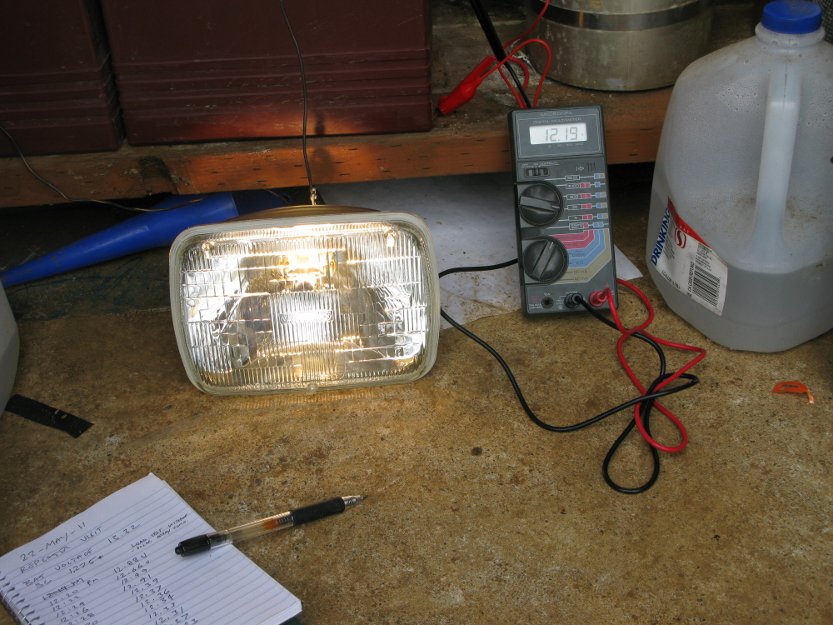
The auto headlight is drawing
4.7 amps. Charge controller is
disconnected during the test.
| Test #1, repeater batteries. Load is 2.35 amps. Times in HOURS.
70 amp hour draw voltage dropped to 12.23 volts |
Test #2, spare batteries. Load is 4.7 amps. Times in MINUTES.
2 amp hour draw voltage dropped to 12.19 volts |
Test #3, spare batteries. Load is 2.35 amps. Times in HRS:MIN.
56 amp hour draw voltage dropped to 12.29 volts |
 |
Load testing the
batteries. The auto headlight is drawing 4.7 amps. Charge controller is disconnected during the test. |
 |
The battery voltage
was 12.88 volts 2 minutes into the load test. After 28 minutes the voltage had dropped to 12.19 volts. |